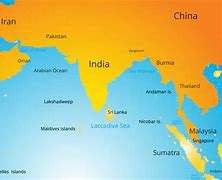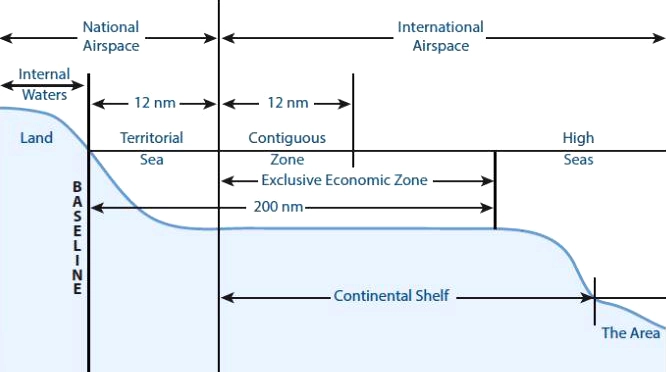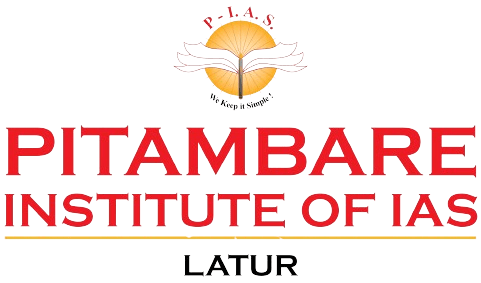14 November
| Content POCSO IPMDA QUAD UNCLOS EXAMPLES |
| GS 2 |
| Vulnerable Sections |
POCSO
Context-POCSO is not meant to criminalise consensual relationships: Delhi HC
It is defined as “An Act to protect children from offences of sexual assault, sexual harassment, and pornography and provide for the establishment of Special Courts for the trial of such offences and matters connected therewith or incidental thereto.”
Provisions of the POCSO act
The POCSO Act was enacted to protect children aged less than 18 from sexual assault sexual abuse, sexual harassment, and pornography.
The act mandates that investigation in the cases is to be completed in two months (from the date of registration of FIR) and trial in six months.
The Act defines a child as any person below eighteen years of age.
POCSO states a sexual assault is to be considered aggravated if –
- The abused child is mentally ill or,
- When the abuse is committed by
- A member of the armed forces or Security forces
- A public servant
- A person in a position of trust or authority of the child, like a family member, police officer, teacher, or doctor or a person-management or staff of a hospital, whether Government or private.
Key features of the Act
It is a gender-neutral act
By defining a child as ‘any person below the age of 18 years, the POCSO Act sets a gender-neutral tone for the legal framework available to child sexual abuse victims. The act also does not distinguish between perpetrators of child sexual abuse on the grounds of gender.
It is an offence to not report an abuse
It requires every person who suspects or has knowledge of a sexual offence being committed against a child to report it to the local police or the Special Juvenile Police Unit. The act not only punishes the perpetrator of sexual abuse but also penalizes those who have failed to report the offence with either imprisonment, a fine, or both.
No time limit for reporting abuse
A victim can report an offence at any time, even several years after the abuse has been committed. Therefore, organizations dealing with children in India cannot deny child sexual abuse complaints filed against their employees on the pretext of lapse of time.
Confidentiality of victim’s identity
Section 23 of the POCSO Act prohibits disclosure of the victim’s identity in any form of media, except when permitted by the special courts established under the act. A violation of this section can attract punishments under the act.
General principles of the POCSO Act
The Act mentions 12 key principles which are to be followed by anyone, including the State Governments, the Child Welfare Committee, the Police, the Special Courts, NGOs, or any other professional present during the trial and assisting the child during the trial, which are-
Right to life and survival: A child must be shielded from any kind of physical, psychological, mental, and emotional abuse and neglect
Best interests of the child: The primary consideration must be the harmonious development of the child
Right to be treated with dignity and compassion: Child victims should be treated in a caring and sensitive manner throughout the justice process
Right to be protected from discrimination: The justice process must be transparent and just; irrespective of the child’s cultural, religious, linguistic, or social orientation
Right to special preventive measures: It suggests, that victimized children are more likely to get abused again, thus, preventive measures and training must be given to them for self-protection
Right to be informed: The child victim or witness must be well informed of the legal proceedings
Right to be heard and to express views and concerns: Every child has the right to be heard in respect of matters affecting him/her
Right to effective assistance: financial, legal, counselling, health, social and educational services, physical and psychological recovery services, and other services necessary for the child’s healing must be provided
Right to Privacy: The child’s privacy and identity must be protected at all stages of the pre-trial and trial process
Right to be protected from hardship during the justice process: Secondary victimization or hardships for a child during the justice procedure must be minimized
Right to safety: A child victim must be protected before, during, and after the justice process
Right to compensation: The child victim may be awarded compensation for his/her relief and rehabilitation
| International Relations |
Indian Ocean Region
Context-Extra-regional fishing fleets present in Indian Ocean: Navy

Exclusive Economic Zone (EEZ)
More than 200 Chinese fishing vessels have been monitored in the Indian Ocean in the first half of this year, according to the Indian Navy, even as illegal, unreported and unregulated (IUU) fishing continues to rise beyond India’s Exclusive Economic Zone (EEZ).
Most of the illegal activities are found in the northern Indian Ocean Region (IOR). Such fishing depletes fish stocks, destroys marine habitats, puts fishermen at a disadvantage and affects coastal communities, especially in developing countries.
IPMDA and QUAD
The Quad leaders launched a new initiative for the Indo-Pacific that allows the partner countries to fully monitor the regional waters and announced over $50 billion of infrastructure assistance for the region over the next five years.
The announcement on the rollout of the Indo-Pacific Maritime Domain Awareness (IPMDA) and the funding assistance came at the second in-person Quad summit in Tokyo on May 24.
PM Narendra Modi, US President Joe Biden, Japanese PM Fumio Kishida and Australian PM Anthony Albanese participated in the Quad leaders’ summit.
What is Quad?
• The Quad, or the Quadrilateral Security Dialogue, is an informal grouping of four countries — Australia, India, Japan and the United States.
• Established in the wake of the 2004 Indian Ocean Tsunami to coordinate humanitarian assistance and disaster relief, the Quad has since become a leading regional partnership dedicated to advancing a common vision of a free and open Indo-Pacific through practical cooperation on diverse 21st-century challenges.
• The foreign ministers of the four countries held their first meeting under the Quad framework in New York in September 2019.
• The first Leaders’ Summit of the Quad was held virtually in March 2021.
• The Quad recognises that international law, peace, and security in the maritime domain underpin the development and prosperity of the Indo-Pacific.
• The countries are determined to deepen engagement with regional partners, including through capacity-building and technical assistance, to strengthen maritime domain awareness, protect their ability to develop offshore resources, consistent with the UN Convention on the Law of the Sea (UNCLOS).
• The Quad is exchanging information on ever-evolving threats and working with Indo-Pacific countries, and in multilateral fora, to counter all forms of terrorism and violent extremism.
• Quad partners champion the free, open, and inclusive rules-based order, rooted in international law, that protects the sovereignty and territorial integrity of regional countries.
• The Quad has been focusing on cooperation in areas such as producing vaccines, connectivity projects, facilitating the mobility of students and looking at promoting start-ups and technology collaboration.
Indo-Pacific Maritime Domain Awareness (IPMDA)
• The IPMDA is designed to work with regional partners to respond to humanitarian and natural disasters, and combat illegal fishing.
• It will support and work in consultation with Indo-Pacific nations and regional information fusion centres in the Indian Ocean, Southeast Asia, and the Pacific Islands by providing technology and training to support shared maritime domain awareness to promote stability and prosperity.
• It embodies what the Quad stands for: catalysing joint efforts towards concrete results that help to make the region more stable and prosperous.
• This initiative will transform the ability of partners in the Pacific Islands, Southeast Asia, and the Indian Ocean region to fully monitor the waters on their shores, and, in turn, uphold a free and open Indo-Pacific.
• It will offer a near-real-time, integrated, and cost-effective maritime domain awareness picture. This common operating picture will integrate three critical regions — the Pacific Islands, Southeast Asia, and the Indian Ocean region — in the Indo-Pacific.
• The benefits of this picture are vast: it will allow tracking of “dark shipping” and other tactical-level activities, such as rendezvous at sea, as well as improve partners’ ability to respond to climate and humanitarian events and to protect their fisheries, which are vital to many Indo-Pacific economies.
• IPMDA will harness commercially-available data using existing technologies. Through a combination of Automatic Identification System and radio-frequency technologies, Quad partners can provide an unprecedented “common thread” of activities. Because of its commercial origin, this data will be unclassified, allowing the Quad to provide it to a wide range of partners who wish to benefit.
• It will extend support for information-sharing across existing regional fusion centers, such as:
i) The Information Fusion Center-Indian Ocean Region, based in India.
ii) The Information Fusion Center, based in Singapore.
iii) The Pacific Islands Forum Fisheries Agency, based in the Solomon Islands.
iv) The Pacific Fusion Center, based in Vanuatu.
• Quad partners will begin immediate consultations on this opportunity with partners in the region. As the initiative proceeds, the Quad will identify future technologies of promise, allowing IPMDA to remain a cutting-edge partnership that promotes peace and stability throughout the region.
UNCLOS
United Nations Convention on the Law of the Sea (UNCLOS) 1982, also known as Law of the Sea divides marine areas into five main zones namely- Internal Waters, Territorial Sea, Contiguous Zone, Exclusive Economic Zone (EEZ) and the High Seas.
- UNCLOS is the only international convention which stipulates a framework for state jurisdiction in maritime spaces. It provides a different legal status to different maritime zones.
- It provides the backbone for offshore governance by coastal states and those navigating the oceans. It not only zones coastal states’ offshore areas but also provides specific guidance for states’ rights and responsibilities in the five concentric zones.
Maritime Zones

- Baseline:
- It is the low-water line along the coast as officially recognized by the coastal state.
- Internal Waters:
- Internal waters are waters on the landward side of the baseline from which the breadth of the territorial sea is measured.
- Each coastal state has full sovereignty over its internal waters as like its land territory. Examples of internal waters include bays, ports, inlets, rivers and even lakes that are connected to the sea.
- There is no right of innocent passage through internal waters.
- The innocent passage refers to the passing through the waters which are not prejudicial to peace and security. However, the nations have the right to suspend the same.
- Territorial Sea:
- The territorial sea extends seaward up to 12 nautical miles (nm) from its baselines.
- A nautical mile is based on the circumference of the earth and is equal to one minute of latitude. It is slightly more than a land measured mile (1 nautical mile = 1.1508 land miles or 1.85 km).
- The coastal states have sovereignty and jurisdiction over the territorial sea. These rights extend not only on the surface but also to the seabed, subsoil, and even airspace.
- But the coastal states’ rights are limited by the innocent passage through the territorial sea.
- The territorial sea extends seaward up to 12 nautical miles (nm) from its baselines.
- Contiguous Zone:
- The contiguous zone extends seaward up to 24 nm from its baselines.
- It is an intermediary zone between the territorial sea and the high seas.
- The coastal state has the right to both prevent and punish infringement of fiscal, immigration, sanitary, and customs laws within its territory and territorial sea.
- Unlike the territorial sea, the contiguous zone only gives jurisdiction to a state on the ocean’s surface and floor. It does not provide air and space rights.
- Exclusive Economic Zone (EEZ):
- Each coastal State may claim an EEZ beyond and adjacent to its territorial sea that extends seaward up to 200 nm from its baselines.
- Within its EEZ, a coastal state has:
- Sovereign rights for the purpose of exploring, exploiting, conserving and managing natural resources, whether living or nonliving, of the seabed and subsoil.
- Rights to carry out activities like the production of energy from the water, currents and wind.
- Unlike the territorial sea and the contiguous zone, the EEZ only allows for the above-mentioned resource rights. It does not give a coastal state the right to prohibit or limit freedom of navigation or overflight, subject to very limited exceptions.
- High Seas:
- The ocean surface and the water column beyond the EEZ are referred to as the high seas.
- It is considered as “the common heritage of all mankind” and is beyond any national jurisdiction.
- States can conduct activities in these areas as long as they are for peaceful purposes, such as transit, marine science, and undersea exploration.
| EXAMPLES |
GS 1 Indian Society
A fortnight ago, a family belonging to the Kurmi caste in the State’s Damoh district accused their Dalit neighbours of sexual harassment and shot dead three members of the household. While the police, local MLA and members of the OBC community deny a caste angle to the incident, the survivors say the violence stemmed from the accused’s sustained desire to dislodge them from the village over a property dispute and their caste
KhanaeKidderpore
A women’s college located in Kidderpore, a neighbourhood on the southwest edge of Kolkata, is planning to use food as a medium to culturally join the Muslimdominated area with the mainstream, and build bridges between communities.

